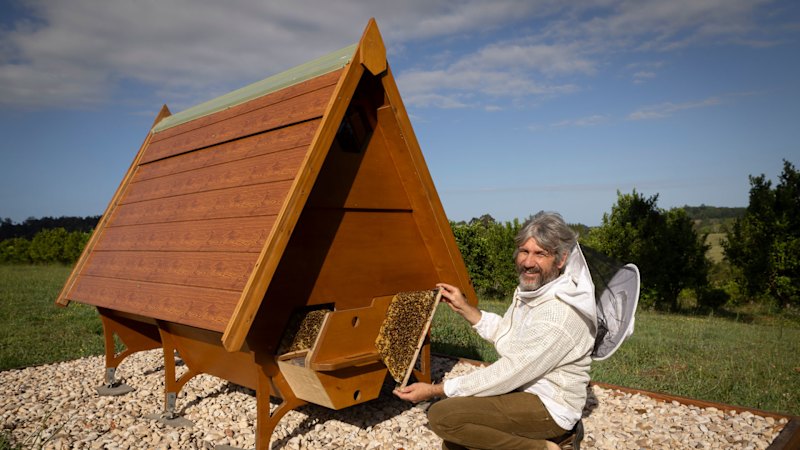
Beekeeper Willow Hankinson has developed an innovative approach to mental health by creating what he calls “bee healing huts.” These structures, situated above active beehives, allow individuals to engage with the calming presence of bees, which Hankinson asserts can significantly enhance mental well-being.
Hankinson’s initiative stems from his personal experiences and observations in the field of beekeeping. He believes that spending time in proximity to bees can offer therapeutic effects, including stress reduction and improved mood. Each hut is carefully designed to provide a safe environment where people can relax and connect with nature while observing the bees at work.
The concept of using bees for mental health is gaining traction, particularly in the United Kingdom. Research has increasingly highlighted the benefits of nature exposure on psychological health. Hankinson’s huts aim to merge this understanding with the unique characteristics of bees, known for their complex social behaviors and essential roles in ecosystems.
Hankinson’s bee healing huts are equipped with comfortable seating and viewing panels, allowing visitors to observe the busy hives without disturbing the bees. The experience is intended to be both educational and soothing. Individuals who have visited the huts report feeling a sense of peace and tranquility, attributing this to the rhythmic sounds of the bees and the natural surroundings.
According to Hankinson, the idea began as a small experiment but has quickly gained popularity. He noted that many people are drawn to the huts not only for their potential mental health benefits but also for the opportunity to learn more about beekeeping and the vital role bees play in our environment.
The initiative has potential implications beyond personal well-being. With mental health issues becoming increasingly prevalent globally, innovative solutions like Hankinson’s could offer alternative therapeutic avenues. As awareness of the benefits of nature therapy grows, beekeeping may emerge as a valuable resource in mental health care.
Hankinson’s vision for the future includes expanding the reach of his bee healing huts. He plans to collaborate with mental health professionals to further study the impact of bee interactions on psychological well-being. By doing so, he hopes to establish a formal framework that supports the therapeutic use of beekeeping.
While the concept of using bees for mental health treatment may seem unconventional, it aligns with a broader movement towards holistic and nature-based therapies. As more individuals seek effective ways to manage stress and improve their mental health, initiatives like those spearheaded by Hankinson could play a significant role in shaping future therapeutic practices.
In conclusion, Willow Hankinson’s bee healing huts represent an intriguing intersection of nature, beekeeping, and mental health. As interest in this innovative approach continues to grow, it may inspire more programs that harness the healing power of nature, particularly the remarkable world of bees.







